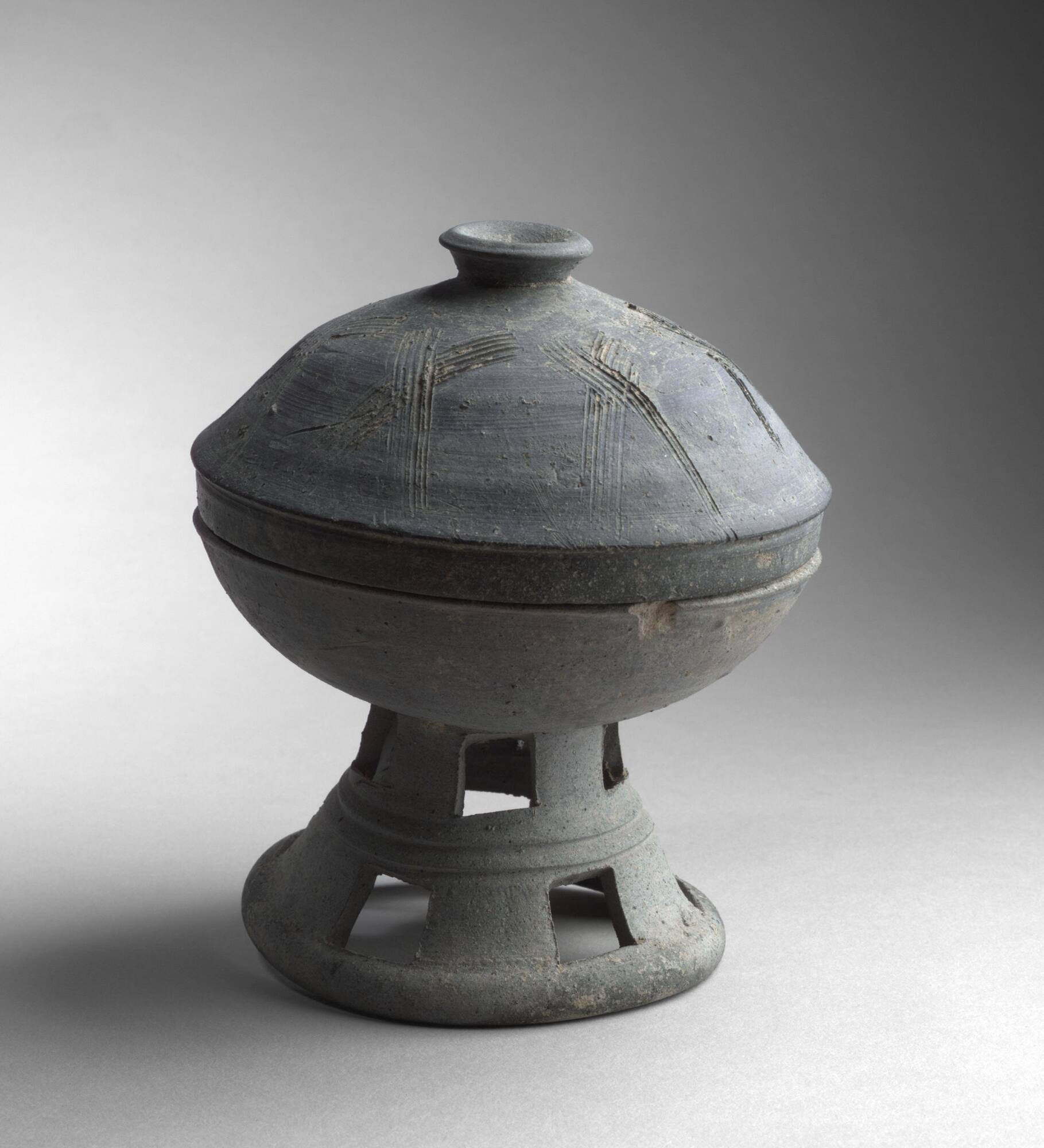
Object Details
Culture
Korean
Date
Three Kingdoms period; Silla Dynasty; 5th or 6th century
Medium
Stoneware
Dimensions
Height: 5 3/4 inches (14.6 cm)
Credit Line
Gift of Dr. Alfred Greisman, Arts and Sciences, Class of 1955, and Mrs. Linda Greisman
Object
Number
82.100.001
BRIEF DESCRIPTIONThis is an early Korean stoneware vessel once used to hold food or drink.WHERE WAS (…)
BRIEF DESCRIPTIONThis is an early Korean stoneware vessel once used to hold food or drink.WHERE WAS IT MADE?This vessel was made in an area of southeastern Korea once ruled by the Silla kingdom.HOW WAS IT MADE?This vessel was made using a potter’s wheel. Openings in the base were cut out by hand, and decorations were incised on the lid. The potter’s wheel was brought to Korea from China during the Han dynasty (206 BC-AD 220). A closed type of kiln was also introduced from China around the same time. These kilns could reach higher temperatures than the open kilns that Korean potters had used previously. Ashes that accidentally adhered to the surface of the vessel during the firing process were converted to a type of glaze by the high temperatures in the kiln. In this covered bowl, there is some brown ash glaze on the interior of the lid.HOW WAS IT USED?During the Three Kingdoms period (57 BC – AD 668) ceramic vessels such as this one were made for everyday use and for burial in tombs. Large quantities of these vessels have been excavated from tombs, where they were interred after being used during funerary rituals. To supply the deceased in the after-life, vessels were typically filled with food and drink at the time of the burial. This particular vessel was likely used as a cup or jar.WHY DOES IT LOOK LIKE THIS?Blackish-gray stoneware predominated during the Three Kingdoms period, some with ash glazes that occurred accidentally during high temperature firing, when flying ash settled on and fused to the pot. Pedestal pots were one of the most common forms during this time. Some, like this one, functioned as cups and are called gobae. They were primarily decorated with pierced geometric forms around the pedestals and incised motifs on the vessel surfaces. Notice the x-shaped pattern on the lid of this vessel.












